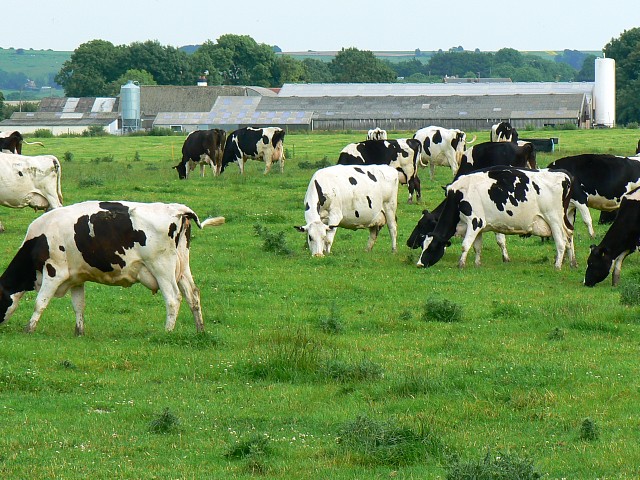
Conventional Holstein Friesian herds with the highest feed costs per litre spend 6p a litre more on purchased feeds compared with those with the lowest feed costs, reveals a Kingshay report to be published at the Livestock Event 2015.
Dairy Manager data shows the 10% of producers with the lowest purchased feed costs spend an average of 5.1ppl on purchased feed, while 10% spend 11.2ppl on average, explains Kingshay managing director Duncan Forbes. The average herd has a feed cost of 8.4ppl and produces 8000 litres, from 2.9t of concentrate equivalent and has a margin over purchased feed per cow of £1735 (see table).
With milk sales of 1.5m litres, every 1ppl difference in feed costs equates to £15,000 for the average Dairy Manager herd. “There is a lot of potential in working out every herd’s feed cost per litre, understanding what is achievable for the herd and looking for areas where improvements can be made.
“It is not surprising higher yielding herds have higher feed costs per litre. Herds with the 10% highest purchased feed costs are producing 8830 litres a cow, over 2000 litres a cow more than the lowest 10%. What is surprising is that on average the margin over purchased feed per cow is remarkably similar, so nearly all the extra milk value is spent on feed.
“This does not mean high yielding herds cannot successfully produce a higher margin per cow, to help cover overhead costs and give a better return on capital invested. When we rank herds by yield bands, we can see herds above 9000 litres, which average 9767 litres a cow have an average feed cost of 9.3ppl resulting in a margin per cow of £2067.”
However, the herds between 6000 and 7000 litres which average 6537 litres have an average feed cost of 7.2ppl. “So, the difference between the highest and lowest feed costs, is clearly not all explained by yield, but neither does yield always pay,” adds Mr Forbes.
“As yields increase, there is less response to additional concentrate.” Between the years to March 2014 and 2015, the analysis of 9000-litre plus herds shows they have fed 82kg a cow more concentrate, but achieved only an 81 litre increase in milk yield a cow. This indicates on average each extra litre cost 23.6ppl in feed.
“Looking back at Dairy Manager data for previous years also highlights that increased yields in the last few years have taken 1.1kg of purchased feed for each additional litre. At today’s feed prices this has a cost of about 25ppl. So, the argument that the extra litres help to dilute overhead costs per litre does not stand up, as on average the additional litres could be giving little return after feed costs, depending on the farm’s milk price.
“The message is clear that in these times of tight margins, it is vital that individual herds review their own feed costs in relation to their milk price, making margin over purchased feed, per litre and per cow, important for every herd to appraise and monitor at least on a monthly basis. This will allow feed costs to be managed with the precision demanded by the current low milk prices and narrow margins,” says Mr Forbes.
